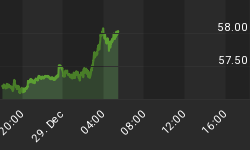The repurchase agreement or "repo" market is where primary dealers finance their inventory of US Treasuries, where companies find short term financing and where money market funds invest much of their capital. With daily "repo" transactions estimated at $2-4 trillion USD it is truly amazing how few understand the grease that keeps the US economy functioning.
The product itself is very simple. A company requiring short term financing pledges their US Treasuries as collateral with another party who lends them cash. Because of the little to no risk involved money markets invest heavily in the repo market. Below are a few oversimplified examples of how the market works.
Company X, a primary US Treasury dealer has $100 billion in US treasuries. They pledge those treasuries as collateral in the repo market and receive $98 billion cash in exchange. They take that $98 billion and buy more US Treasuries and so on. In a repo even though Company X pledged those treasuries they still in fact own them and receive the interest payment.
Company Y has $100 million in surplus cash each night and wants to invest that money to earn interest versus leaving it at the bank interest free. They agree to lend that money to Company X overnight with Company X's US Treasuries as collateral.
The key to this whole market is having collateral. For example in the mortgage market there are millions of homeowners who want to refinance to stay in their homes. There is also plenty of money available to lend. What there is not enough of is equity in homes to be used as collateral. The result, new loans are not created and the market is collapsing.
With QE1 and then QE2 the Fed "printed money" to purchase Mortgage Backed Securities (MBS) and US Treasuries. The result they removed the very collateral from the market needed to make it function causing two serious problems.
Repo Rates have declined not because of lack of demand for credit. The demand is still there but lack of collateral (i.e. US Treasuries).
With the decline in rates money market funds are at risk of permanently leaving in search of higher yielding investments.

Imagine if money market funds opt to invest in other products in hopes of finding higher yield for their investors. Company X in the example above needs to be able to access the repo market to finance their inventory of treasuries but with hundreds of companies in a similar position and with the available capital decreasing, someone will be shut out of the market and unable to meet their financing needs. Overnight another Lehman style collapse could happen.
This then begs the question was Bernanke bluffing when he said recently the Fed could further expand its balance sheet or was ready to act if the economy weakened? I have no doubt when pressed the Fed will in fact act but I do doubtthe size of their next action under current market conditions.
If the Fed were to do another QE1 or QE2 they would remove more collateral from the repo market in the form of MBS and Treasuries. They cannot add any more stress to this market. They run the very risk of chasing away money market funds to other higher yielding investments. This cannot happen. The economywill crash overnight.
If the Fed were to adjust the duration of their balance sheet (meaning the average maturity of their holdings) they will hurt the banking sector. For example if they sold their two year treasuries and used those funds to purchase ten year treasuries they would flatten the yield curve (two year yields would rise and ten year would fall). This would hurt the banks and discourage lending. They could go the other direction and use the proceeds from the sale of ten year treasuries to purchase the two year which would steepen the yield curve but would cause mortgage rates to rise which would further weaken the housingmarket and their holdings of MBS from QE1.
If the Fed were to adjust the duration of their balance sheet which is the most likely next step it would not necessarily mean the printing of money but rather a simple change to the makeup of the holdings. Unlike QE1 and QE2 noadditional capital would come to the system.
In reality the Fed did a real world test of printing trillions of dollars to see how it would impact economic growth. It failed and they are aware of that. Beyond a theoretical model perhaps they had to do this real world test.They are seeing the results.
They tried to grow the economy at the risk of the repo market but may have pushed too far. They will likely try to find that middle ground but to think Bernanke is ready to launch QE3 in traditional form is a dangerous bet. To think that "operation twist" will have a similar affect on equities as priorasset purchases is another dangerous bet.
I do believe the Fed is truly limited in what they can do next. The last FOMC meeting put a date on "extended period." Perhaps that was intended to convince money market funds that yield chasing is a futile game and to stay in repos. Only those behind Fed closed doors understands the "method to theirmadness."
I do believe the future of Fed policy hinges on Treasury securities available for collateral and based on the record low yields availability looks historically low.
















